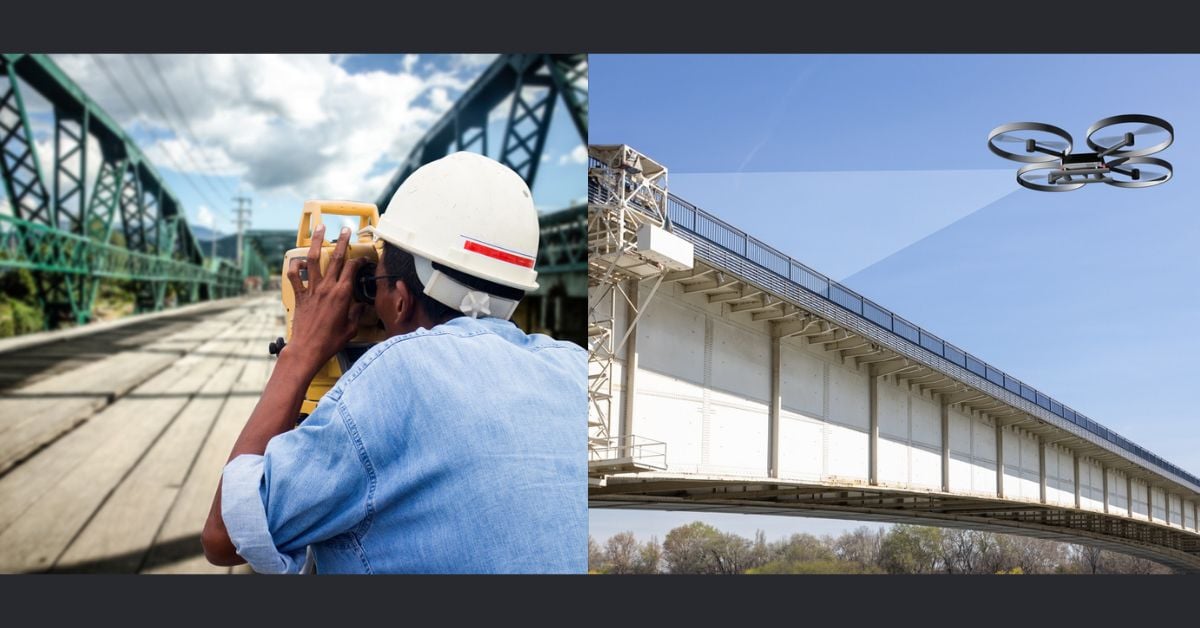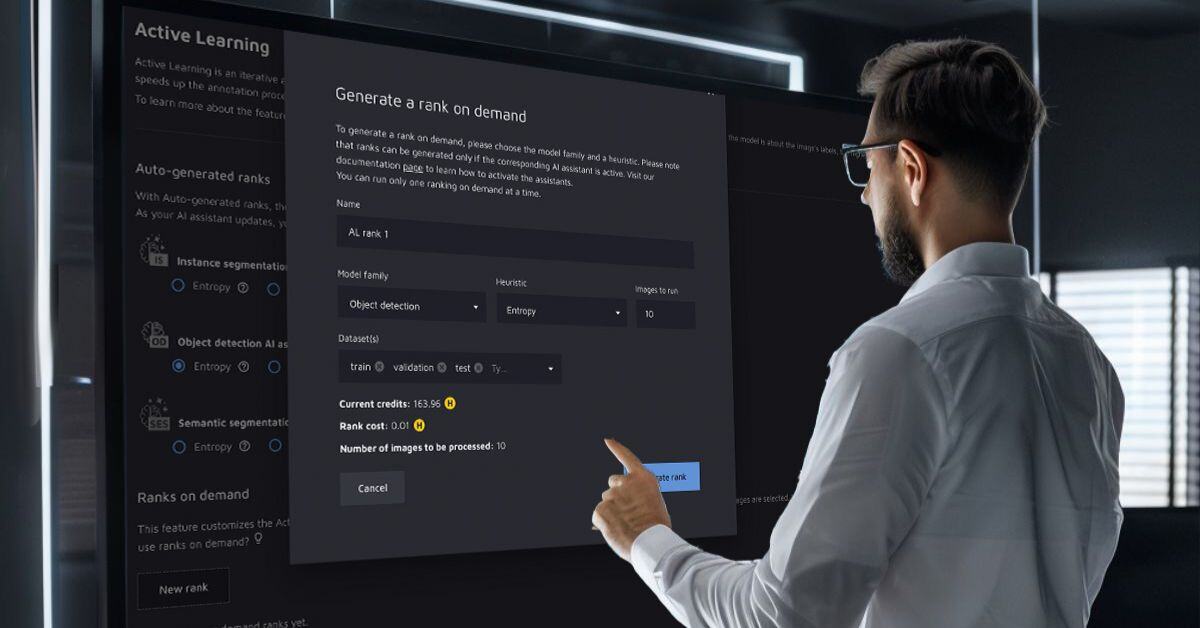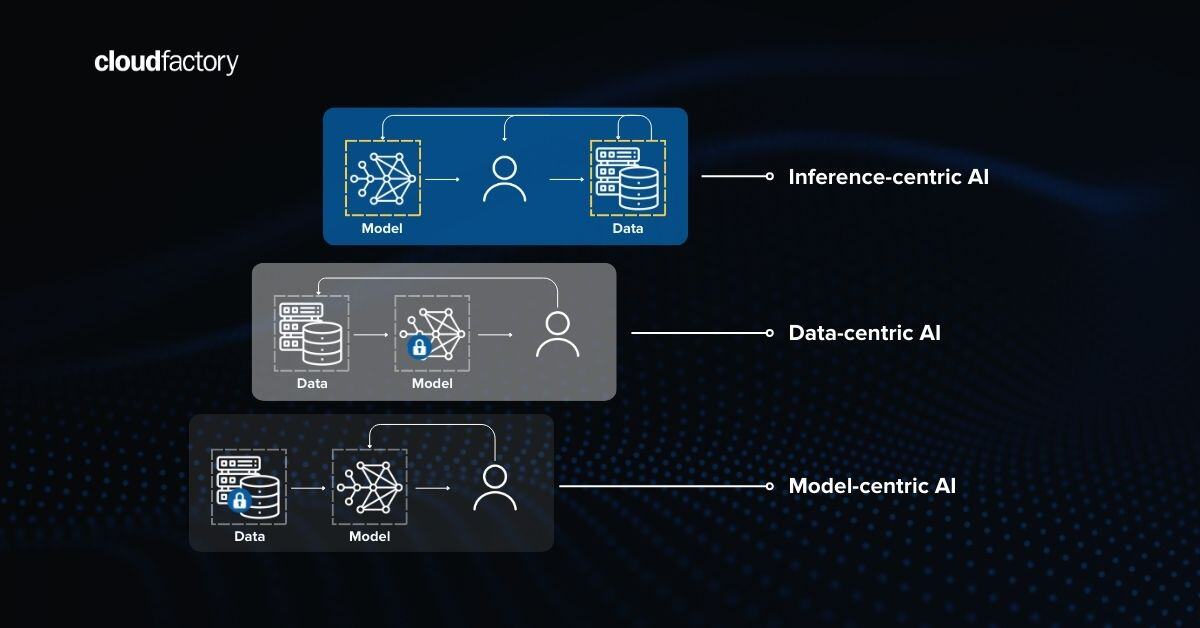Incorporating artificial intelligence (AI) techniques such as machine learning (ML) models in infrastructure asset inspection and management is more than just an emerging trend—it's a necessity.
Infrastructure spans bridges, roads, utilities, buildings, etc. It forms the backbone of our daily lives and economic activities. Ensuring these infrastructure assets are efficiently maintained and managed is crucial, and this is where ML technologies come into play.
This blog post will explore how ML is changing the way we inspect, maintain, and manage our critical infrastructure assets.
Three roles that ML has in infrastructure asset inspection and management
1. Enhancing asset inspection with ML
Traditionally, infrastructure asset inspection has been manual, time-consuming, and prone to human error. AI transforms this process by automating inspections using drones and robots equipped with cameras and sensors. These AI-driven tools can cover more ground quickly and identify potential issues that the human eye might miss.
For example, AI algorithms can analyze images from drone inspections to detect cracks in bridges or roads, corrosion in metal structures, or signs of wear and tear in utility poles.
2. Predictive maintenance through ML models
In infrastructure management, ML models can potentially analyze historical maintenance records, sensor data, and inspection results to predict when an asset might fail or require maintenance. This predictive maintenance approach can be beneficial as it may prevent costly downtime and extend the lifespan of infrastructure assets by scheduling maintenance work before failures occur.
3. Optimizing asset lifecycle management
ML algorithms can optimize decision-making throughout an asset's lifecycle, from acquisition and operation to maintenance and disposal. By analyzing data on usage patterns, environmental conditions, and maintenance history, ML models can provide actionable insights to improve asset performance, minimize costs, and ensure safety standards are met.
Challenges in implementing ML
Despite the potential benefits, integrating AI-powered models into infrastructure asset management poses some real challenges including:
- Training AI models requires a lot of high-quality labeled data, which can be expensive and time-consuming to collect and label.
- Infrastructure systems are intricate, so the AI models used to analyze them need to be sophisticated to accurately reflect real-world conditions.
- Successfully using ML in infrastructure management requires careful planning and a deep understanding of how these technologies work to improve performance and efficiency.
To avoid these challenges, ML engineers or other technical roles should focus on the technical intricacies that drive these advancements. Here are several technical features and functions that are particularly relevant:
- Automated feature extraction: Traditional computer vision approaches such as feature extraction through convolutions speed up the preprocessing stage and improve defect identification in infrastructure assets.
- Data augmentation techniques: Essential for dealing with limited datasets, data augmentation methods such as rotation, flipping, scaling, etc enhance model robustness by bringing diversity comparable to real-world data.
- Time-series forecasting and predictive maintenance: Utilizing models like Long Short-Term Memory (LSTM) networks, ML engineers can analyze sensor data over time to predict maintenance needs, enabling proactive asset management.
- Efficiency through transfer learning: By adapting pre-trained models to domain-specific tasks, ML engineers can save resources and achieve high accuracy without starting from scratch, which is especially useful for analyzing infrastructure inspection images.
- Real-time analysis via edge computing: Edge computing facilitates immediate data processing and analysis at the source, vital for timely maintenance actions in remote infrastructure assets, reducing latency and dependency on constant cloud connectivity.

Manual vs AI-powered infrastructure asset inspections. AI-powered inspections have the potential to increase efficiency, accuracy, and safety.
Where does data labeling fit in?
In infrastructure asset management, complex data (drone images, sensor readings) demands substantial, high-quality labeled data for ML models to learn and predict effectively. But it's time-consuming and requires a meticulous level of attention to detail.
For example, labeling a single image for crack detection on a bridge might involve drawing precise boundaries around each crack and categorizing them by size, location, and severity. Or, labeling imagery for vegetation encroachment on utility lines involves identifying and delineating areas where vegetation comes dangerously close to or touches the power lines.
In addition, labeling must be done in a smart and consistent manner following a specific strategy and data annotation guidelines. It's pivotal to ensure that the labels are machine-readable and designed in the accurate ML paradigm - which includes the need to handle overlaps, artifacts, edge cases, etc.
Chaos during the annotation process leads to plenty of noise on the data side - reducing the estimated model performance metrics such as mean Average Precision or accuracy score.
This is further complicated by the vast diversity of infrastructure assets and their condition, requiring labels to encompass a wide range of defects and anomalies.
Inaccurate or inconsistent labels can lead to misinterpretations and errors in the model's predictions, potentially compromising the reliability of maintenance schedules and lifecycle management strategies—and ultimately posing safety risks.
Consequently, ensuring high-quality data labeling is paramount for the successful application of ML in infrastructure asset management.
To address these challenges, leveraging advanced data labeling tools and platforms that incorporate AI to automate parts of the labeling process can significantly enhance efficiency and accuracy.
These tools can pre-process and pre-label data, reducing the manual workload and improving label consistency. Also, engaging with professional data labeling services, which specialize in delivering accurately labeled datasets, can help ensure the quality of training data.
The best data labeling services use a combination of AI-powered automation tools and expert human oversight to achieve high-quality labels across large datasets, enabling more precise and reliable AI and ML models for infrastructure asset inspection and management.
How CloudFactory's Accelerated Annotation can help
Accelerated Annotation addresses the need for large volumes of accurately annotated data by:
- Speeding up data annotation. Accelerated Annotation integrates human expertise and AI-powered labeling to annotate data collected from drones, sensors, and IoT devices quickly.
- Customizing workflows for infrastructure assets. Accelerated Annotation tackles diverse infrastructure projects, from bridge image analysis to sensor data labeling, by customizing workflows for each unique project.
- Enhancing model accuracy with quality data. Combining AI and human expertise, Accelerated Annotation delivers high-quality data for robust ML models, enabling reliable predictions and recommendations.
- Scalability and flexibility. Accelerated Annotation scales to meet the fluctuating data needs of various infrastructure projects, preventing annotation bottlenecks in asset management.
CloudFactory's role in supporting advanced ML applications for infrastructure
CloudFactory provides accurately annotated data, which is the foundation for training effective ML models. With capabilities for handling complex annotations and supporting a wide range of data types, CloudFactory enables AI and ML “techies” to focus on developing and refining models that incorporate these advanced technical features and functions.
This collaborative approach between accurate data annotation services and cutting-edge ML techniques is essential for driving innovation in infrastructure asset inspection and management.
If you're building your data annotation strategy and need greater detail about Vision AI decision points, download our comprehensive white paper, Accelerating Data Labeling: A Comprehensive Review of Automated Techniques.
Data Labeling Data Annotation Geospatial Drone Inspection Spatial









